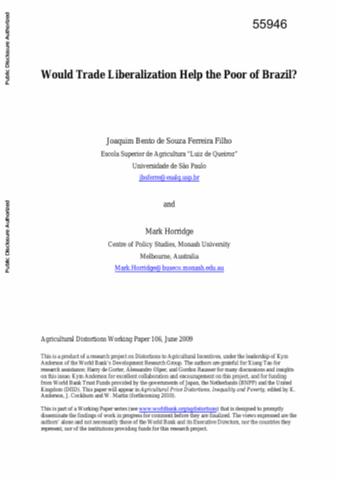Resource information
This paper addresses the potential effects of world agricultural trade liberalization on poverty and regional income distribution in Brazil, using an inter-regional applied general equilibrium (AGE) and a micro-simulation model of Brazil tailored for income distribution and poverty analysis by using a detailed representation of households. The model distinguishes 10 different labor types and has 270 different household expenditure patterns. Income can originate from 41 different production activities located in 27 different regions in the country. The AGE model communicates to a micro-simulation model that has around 112,000 Brazilian households and 264,000 adults. Poverty and income distribution indices are computed over the entire sample of households and persons, before and after the policy shocks. The simulated trade liberalization scenario causes agriculture to expand considerably and so, given the importance that agriculture still has for the poorest in Brazil, it has positive impacts on poverty in Brazil. The only states which show an increase in the number of poor households are Sao Paulo and Rio de Janeiro, where the bulk of the manufacturing activities in Brazil are concentrated. There is an even more positive impact on inequality. The higher fall in the poverty gap is shown to occur mainly on the poorest household groups, suggesting that the poorest among Brazil's poor will benefit more from global trade liberalization.


